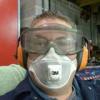1275 with HIF38. HIF38 was professionally rebuilt. Mechanical fuel pump was new. As was the tank and all the fuel lines.
Boring cam. Original 65D distributor.
And was all set up on a rolling road early last year.
3000 miles of perfect behaviour since then. It ran fine yesterday, but not today.
Just today started bogging when lots of power is demanded, at any significant rpm.
Feels like fuel starvation, because if you ease off for a few seconds and press the pedal again, then it'll pull fine for a couple or three seconds, and then start bogging again. My guess is there's only a dribble of fuel getting in, so asking for lots of power drains the float-chamber, but easing-off allows the float chamber to fill up again. That realistic?
So far have checked:
- Oil level and smell of fuel in the oil (don't think so).
- Fuel leaking externally from the pump (no).
- Plugs (look ok - bit pale maybe).
- Carb piston has oil and is free (yep).
- Fuel in the tank ( ![]() ).
).
Could be a weak fuel pump. Is a stuck valve at all common on these? Is a split diaphragm really obvious?
But there's no filter between pump and carb (one is on order now). So that seems a more likely cause. Where in the carb am I most likely to find dirt and how much of the car do I take apart to access it?


















